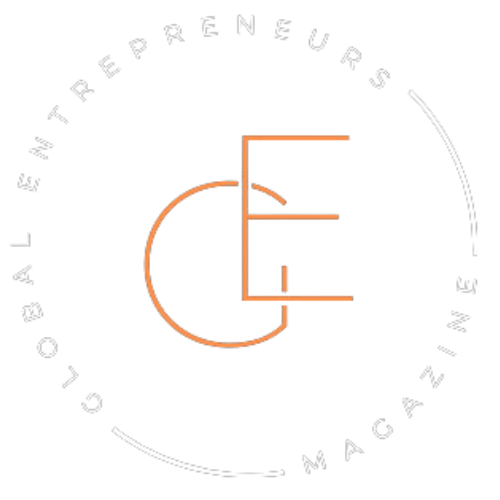They told her she was reckless. Walking away from a 15-year career, a six-figure salary, and a corner office. All for what? A vague dream of starting a slow fashion brand rooted in her grandmother’s sewing techniques?
At first, it didn’t make sense to anyone — including her. There were no investors lining up. No press coverage. No overnight success. Just a tiny Shopify store, fabric scraps on her kitchen table, and a gut feeling that she hadn’t come this far just to spend the next twenty years sitting in strategy meetings about things she no longer cared about.
That’s the thing about second acts. They rarely come wrapped in logic. They usually show up after something breaks — a job, a body, a belief system. And when it does, it doesn’t ask for permission.
Some of the most compelling entrepreneurs of our time didn’t build their empires in their twenties. They built them in the ashes of something else. A failed startup. A dissolved marriage. A bout of burnout so severe it forced them to reimagine what success actually looked like.
This isn’t a trend. It’s a pattern.
A growing number of people are rewriting their scripts — not chasing reinvention for vanity, but for survival. For meaning. For the kind of freedom that no title or paycheck ever really offered. They’re not just changing jobs. They’re changing themselves — and often, shifting the industry they walk into.
This piece is about them.
The ones who took a risk not to get ahead, but to get real. The ones who started again when everyone else thought they were finished. And the unexpected ways they reshaped the business world — not in spite of their detours, but because of them.
Chapter 1: From the Brink to the Breakthrough
It started with a lease termination notice taped to the front door of his café.
Three months into the pandemic, foot traffic had disappeared, bills kept piling up, and Ivan was burning through his savings just to keep his staff paid. When the landlord refused to renegotiate the rent, he knew it was over. The café he built from scratch — the one he dreamed about for years while working night shifts in someone else’s kitchen — was gone.
For weeks, he didn’t touch a spatula. He couldn’t. The grief was too raw, and the shame sat heavy. Friends called it a loss. Family called it a setback. But deep down, Ivan felt something else entirely. He felt free.
There’s something strange that happens when your worst-case scenario unfolds in real time: your fear loses its power. And in that quiet, humbling space, a different idea crept in. Not a grand plan. Not a business strategy. Just a simple thought — “What if I filmed a recipe today?”
He posted the video to Instagram with no expectations. No filters. Just Ivan in his tiny apartment kitchen, teaching how to make garlic butter shrimp like he used to in his café’s open kitchen. 842 views. Then 1,500. Then a direct message from a local brand asking if he did sponsored content. He didn’t — until that day.
Within a year, Ivan wasn’t just recovering. He was thriving. His food content had gone viral. Brands were knocking. And the thing he thought was his biggest failure had turned into his second act — one that gave him creative freedom, financial stability, and something he never had as a restaurant owner: time.
Reinvention rarely looks heroic at the start. It often begins in a quiet moment of despair — when a door slams shut and you’re forced to sit in the silence of what’s next. But it’s in those moments that the bravest decisions get made. Not to fight your way back into the life you had, but to build something new — with whatever pieces you still have left.
Breakthroughs don’t always come in boardrooms. Sometimes, they come in borrowed kitchens, on worn-out couches, or while staring at a blinking cursor on a blank screen. The starting point doesn’t matter as much as the choice: to move forward anyway.
Chapter 2: The Quiet Rebuild (When Nobody’s Watching)
Mae didn’t post about her pivot. She didn’t update her LinkedIn. She didn’t even tell her old colleagues what she was up to.
After spending a decade as a corporate strategist, she was tired — not the kind of tired that a vacation could fix, but the kind that sat in your bones. She left without a big plan, just a hunch that the path she was on would never lead to the life she wanted.
So she moved back to her hometown, rented a cheap studio apartment, and started learning. Copywriting, user interface design, community management — whatever caught her interest. Her days were unglamorous. She watched YouTube tutorials at 1 a.m., took unpaid gigs for small brands, and wrote newsletters that barely got opened.
No one clapped. No one noticed. And that was the point.
When you’re rebuilding your identity, there’s a stretch where nothing makes sense on the outside. You’re stacking skills that may never turn into anything. You’re chasing clarity in the dark. You’re applying for jobs you’re overqualified for and still getting ghosted. But something inside starts to shift. You become less concerned with appearances. More interested in momentum.
Mae eventually landed a contract with an indie wellness brand. Then another. Then a full-time offer. Five years later, she runs her own boutique agency, working with mission-driven founders — and most of her clients don’t even know she used to wear a blazer every day.
Reinvention is never instant. It’s made of unpaid hours, unacknowledged risks, and a thousand small decisions that no one else will ever see. But that’s what makes it real.
The second act doesn’t announce itself. It arrives quietly, often in the form of a long, awkward middle that tests your patience before it rewards your courage.
Chapter 3: Turning Passion into Proof

Before she was a coach, Lara was exhausted.
She worked at a top-tier tech firm where everything looked great on paper — the salary, the title, the prestige. But her body told a different story. Panic attacks during meetings. Insomnia for months. A quiet dread every Sunday evening.
Eventually, she couldn’t push through it anymore. She left without knowing what came next, except that she was done pretending to be fine.
During her recovery, Lara started journaling. She posted snippets online. She wasn’t trying to build a business. She was just trying to breathe. But people responded. Some thanked her for saying out loud what they’d been holding in. Others asked if she offered support. Coaching? Maybe a course?
She said no. Then maybe. Then yes — but just one client to start.
That client told a friend. A few more followed. She created a small digital guide — the kind of thing she wished she had back when burnout consumed her life. It didn’t go viral, but it sold. And that was the moment: proof. Someone paid for something she built from her own story. That wasn’t validation. That was evidence.
She kept going. Iterating. Learning how to build systems. Testing new offers. And without any formal relaunch, Lara found herself running a business that felt nothing like her old job — and everything like the life she used to fantasize about during her worst days.
What began as a coping mechanism became a career.
Sometimes passion isn’t loud or obvious. It sneaks in while you’re trying to heal. And if you’re paying attention — if you’re brave enough to take that first, uncertain step — it can open doors you didn’t know existed.
Chapter 4: Reinvention That Changed the Rules
Before launching her first product, Amina was ignored.
She had spent 12 years in the military. Logistics, supply chain, disaster response — the kind of behind-the-scenes work most civilians never think about. When she returned to civilian life, she assumed her skillset would speak for itself. It didn’t.
Interview after interview, she was met with polite nods and empty promises. “You’re impressive, but not quite the right fit.” Translation: they couldn’t see how her experience translated into a resume bullet.
So she stopped trying to convince anyone — and started building something of her own.
Amina took everything she knew about functionality, pressure-tested systems, and gear durability and funneled it into a design studio for outdoor equipment. She didn’t care about trends. She cared about gear that could hold up in actual storms, not just photo ops. Her first prototype — a modular backpack system — sold out through word of mouth and Reddit threads before she ever placed a paid ad.
Today, she’s not just running a company. She’s setting new standards.
Other brands took notice. Some tried to imitate her. A few reached out for collaboration. But her customers already knew: this wasn’t another lifestyle brand. This was built for real-life resilience — and it came from someone who had lived it.
Amina didn’t follow industry rules. She came in with a completely different framework, because she came from a completely different world. That’s what gave her an edge.
Second-act entrepreneurs aren’t weighed down by how things are “supposed” to be done. They bring fresh eyes, real-world scars, and an outsider’s instinct to question everything. That’s often how reinvention becomes more than personal — it becomes structural.
They don’t just find success. They raise the bar.
Chapter 5: What Reinventors Have in Common
Their industries are different. Their timelines vary. Their reasons for walking away aren’t always the same. But second-act entrepreneurs tend to share a few unshakable traits — the kind that don’t come from textbooks, but from experience.
They know how to sit in uncertainty. While others rush to fix or explain, reinventors are willing to stay in the mess a little longer. That discomfort? It teaches them to think differently. To listen. To stop measuring themselves by titles or LinkedIn headlines.
They ask better questions. Not “What do people expect from me?” but “What kind of life feels real to me now?”
They’re quick to learn, but slower to impress. Most have already climbed a ladder before. They’ve seen how exhausting it can be to chase things that don’t matter. So when they build again, they do it on their own terms — even if it takes longer.
They’re also good storytellers. Not in the branding sense — in the human one. They know how to share failure without shame, how to connect dots others miss, how to turn a quiet personal shift into something that resonates publicly.
But maybe the most important thing? They move. They don’t wait until every piece is figured out. They don’t need someone else to say “you’re ready.” They start where they are, with what they have, and trust that clarity will catch up.
Reinvention doesn’t reward perfection. It rewards motion.
Closing Reflection: The Best Time Is After Everyone Thinks You’re Done
Sam was 58 when he started over.
His consulting firm had folded. The industry he spent decades mastering didn’t have a seat for him anymore. Friends suggested retirement. Some even said, “You’ve had a good run.”
But Sam wasn’t done. He just wasn’t sure what came next.
He spent a few months wandering — volunteering, freelancing, even teaching a night class at a community college. And in one of those classes, he noticed something: the students were hungry, not just for skills, but for stories. They didn’t want theory. They wanted to know what it actually felt like to lose a deal, close a company, rebuild a life.
So Sam leaned in. He created a series of candid video lessons called “What I Wish I Knew at 30.” They weren’t flashy. No fancy production. Just straight talk about failure, negotiation, and staying human through it all. A small audience found him. Then a bigger one. Then a publisher.
Today, Sam runs an online mentorship platform for career changers — many of whom are in their 40s, 50s, even 60s. He laughs when people call it a comeback. “This version of me didn’t exist before. There’s nothing to come back to.”
Age didn’t slow him down. Expectations did — until he stopped listening to them.
There’s something electric about doing the thing no one saw coming. Reinvention doesn’t care how long it took. It doesn’t care what you used to be. It’s not a return. It’s a reentry — and sometimes the later you launch, the clearer your trajectory.
So if you’re standing at the edge of something new, wondering if you missed your shot, ask yourself this: what if your second act is the one that finally tells the truth?
Because the best time to start again is when everyone else thinks the story’s already over.




